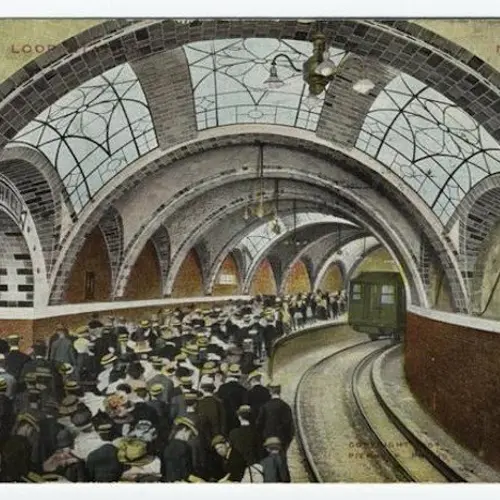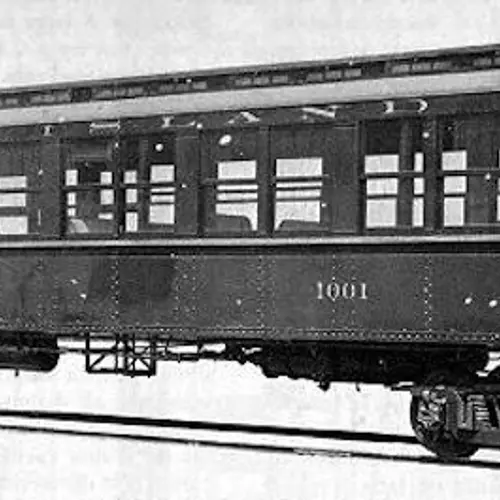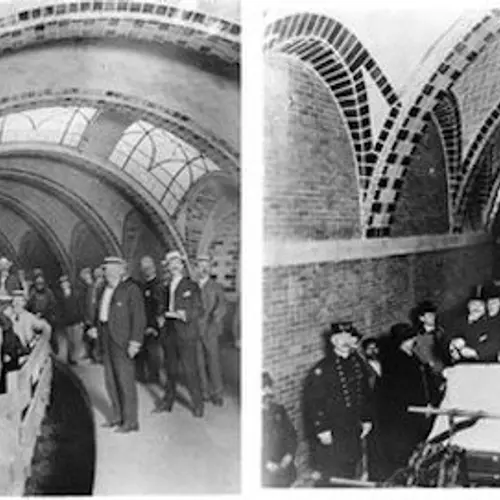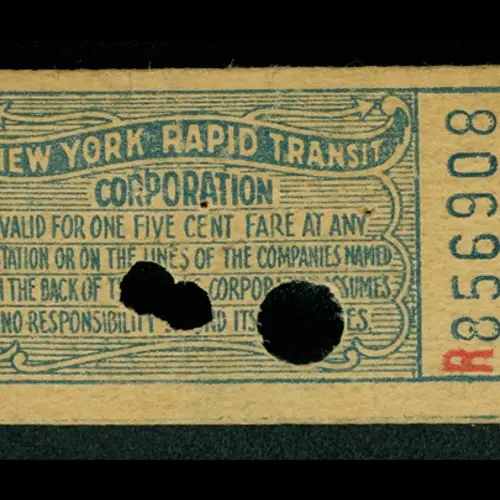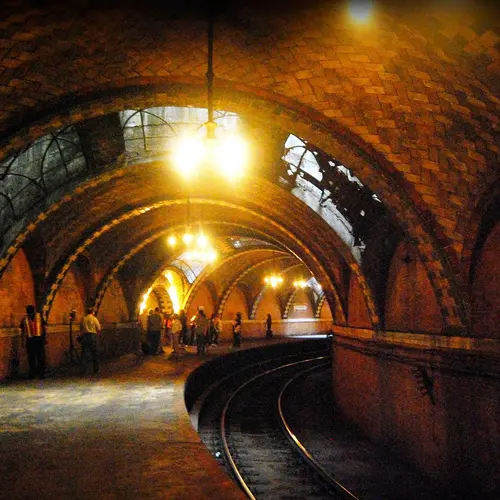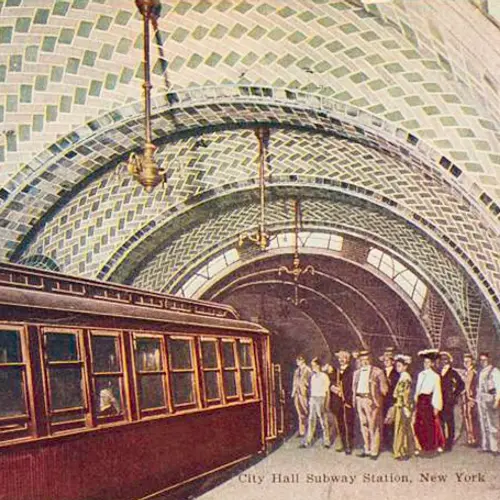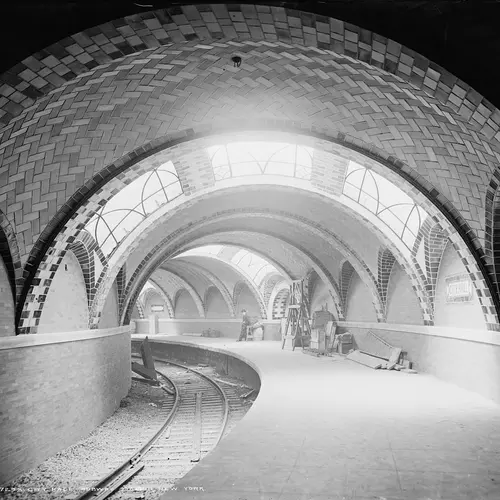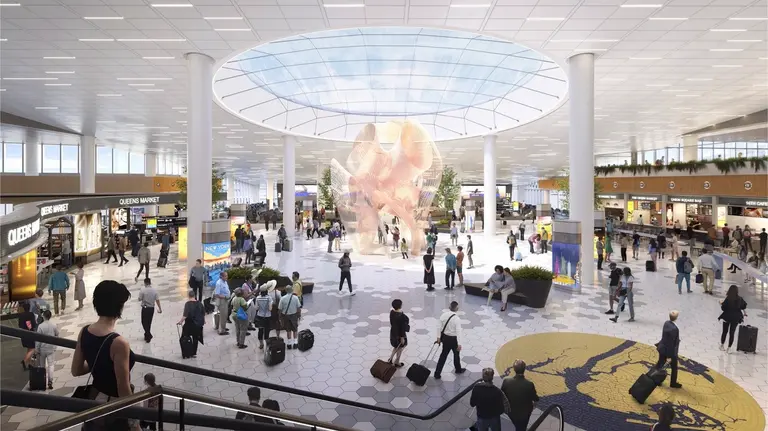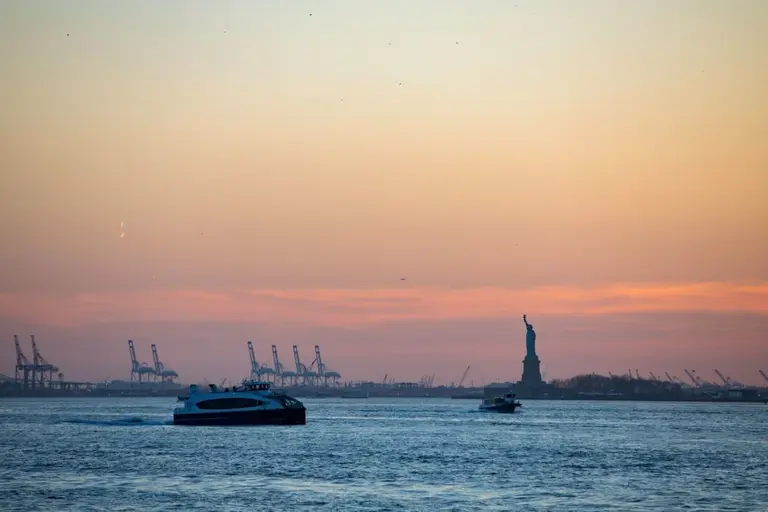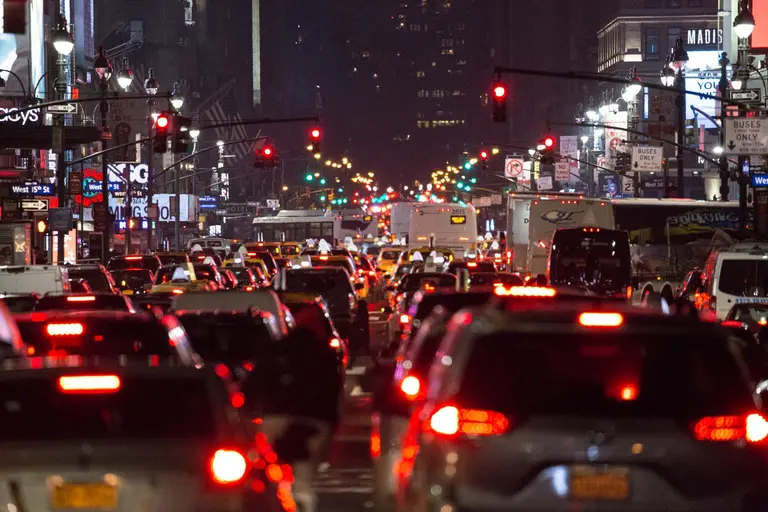What it was like the day the NYC subway opened in 1904
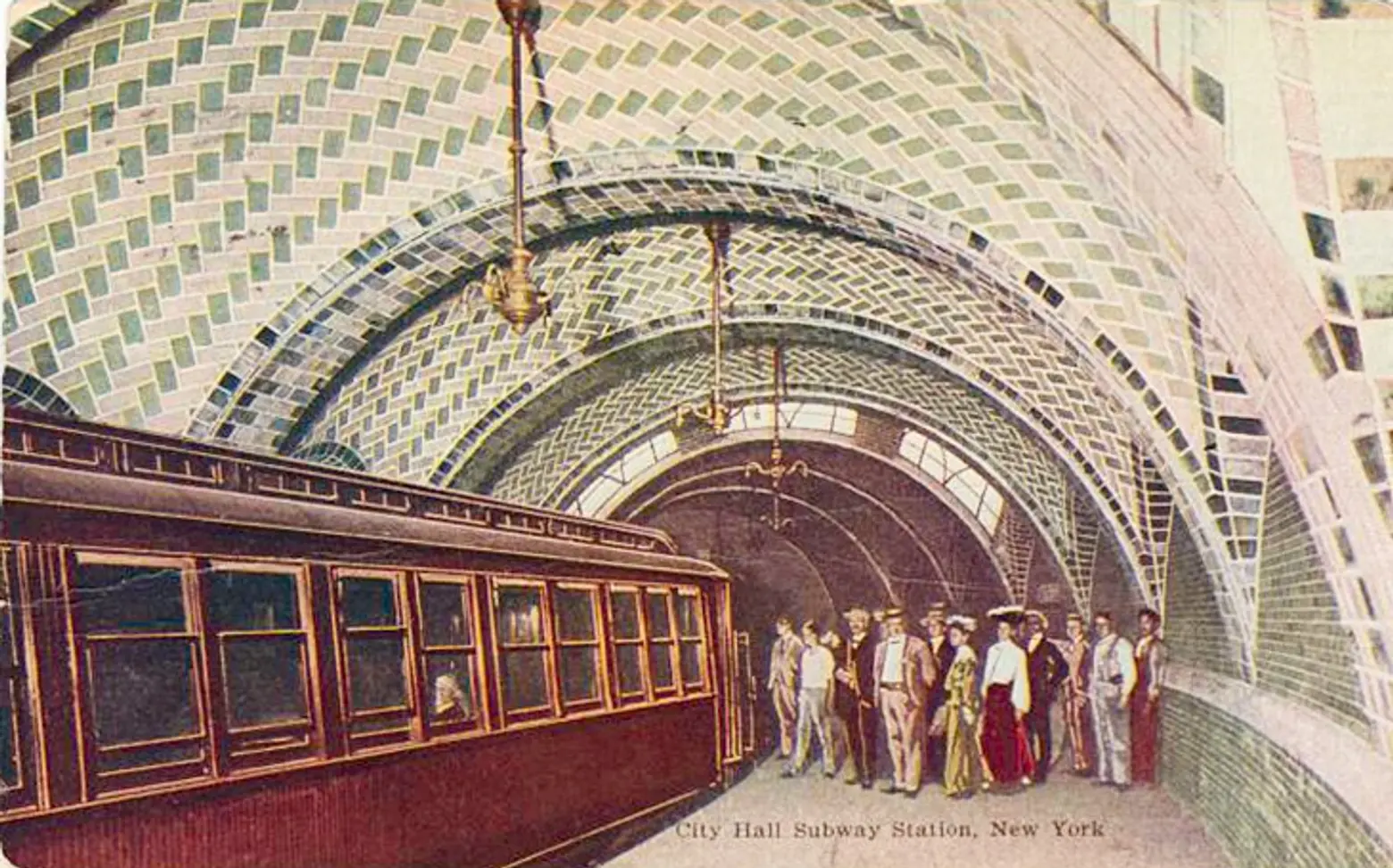
The Miriam and Ira D. Wallach Division of Art, Prints and Photographs: Picture Collection, The New York Public Library. “City Hall Subway Station, New York” The New York Public Library Digital Collections. 1906.
The Interborough Rapid Transit Subway, or IRT, was the first subway company ever in New York City. The company formed as a response to elevated train lines springing up around the city–it was time to go underground and build a rapid transit railroad to help combat street congestion and assist development in new areas of New York, according to NYCsubway.org. On October 27, 1904, the first IRT subway line opened with the City Hall station as its showpiece. It’s no overstatement to say that after this date, the city would never be the same. And the day was one to remember, with pure excitement over the impressive feat of moving the city’s transit system underground.
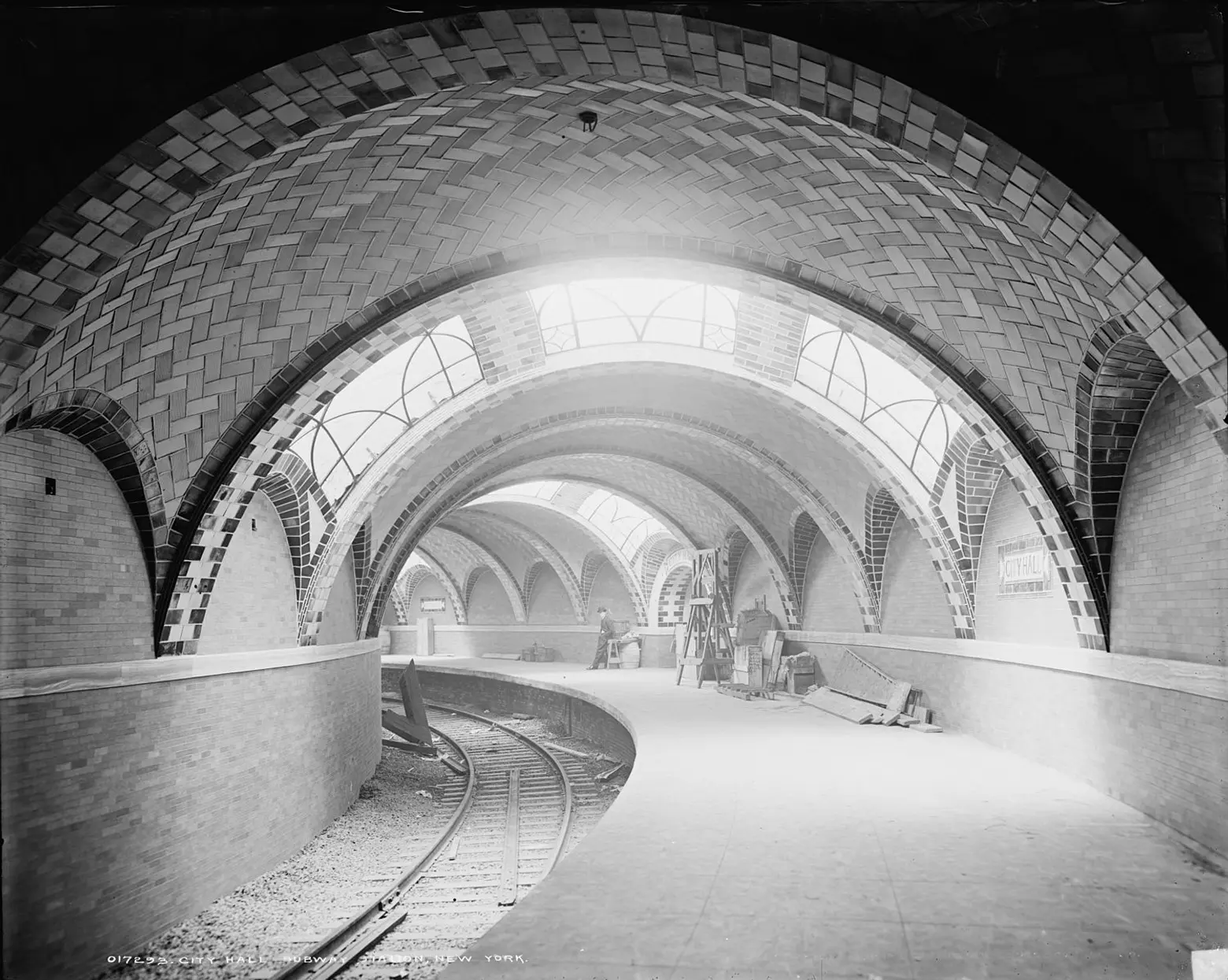 The City Hall station under construction, via Wiki Commons
The City Hall station under construction, via Wiki Commons
The first IRT subway line ran from the spectacular City Hall subway station–which is no longer open–to 145th Street. The route was trumpeted as “City Hall to Harlem in 15 minutes.” The day’s festivities centered around the City Hall station, decked out in Guastavino vaulting, as it was intended to be the ultimate showpiece for the IBT’s new subway line with its impressive architecture and curved platform. It was also the chosen place for hanging the commemorative plaques dedicated to those who designed, built, and financed the system.
The New York City Mayor George B. McClellan was given the honorary duty of starting the first train at City Hall station. According to a New York Times report of the event, the mayor was eventually supposed to give the controls over to an IRT motorman. Instead, he took the train all the way to 103rd Street. When asked, “Don’t you want the motorman to take hold?” McClellan said, “No sir! I’m running this train!” In the Times article, McClellan is dubbed as “Mayor-Motorman” during the opening ride.
The Mayor was delivered a silver controller to operate the subway train; it was inscribed with the message, “Controller used by the Hon. George B. McClellan, Mayor of New York City, in starting the first train on the Rapid Transit Railroad from the City Hall station, New York, Thursday, Oct. 27, 1904. Presented by the Hon. George B. McClellan by August Belmont, President of the Interborough Rapid Transit Company.”
Turns out it didn’t fit very well on the motor, so the emergency brake lever was pulled in the first few minutes of the ride. According to the Times, it caused “a violent jolt, a sudden stop,” with passengers “thrown forward as though the train had struck an obstruction.”
Despite the initial error–which was quickly fixed for the rest of the trip–throngs of New Yorkers wanted in on the underground train ride. 200 policemen managed a crowd of as many as 7,000 people around City Hall, some of which pushed through the entrance underground. The New York Times recounted that “both the two sections [of the same train] were crowded uncomfortably. Many passengers stood in every car, and the total loads probably aggregated at least 1,100 passengers.” People were also trying to access the train from different stations. Some had gotten afternoon passes to ride, but the passes weren’t valid for that very first trip.
Some New Yorkers did get the chance, earlier in 1904, to inspect the underground line on wooden cars. Both of the MTA photographs above were taken in 1904. The left depicts an IRT inspection tour with Mayor McClellan in the center foreground and contractor John B. McDonald at the edge of the platform. The right shows an inspection tour for New York City officials.
After that initial ride with the mayor, the subway opened for paying fares at 7 p.m. that same day. Ultimately the first person to buy a green ticket was a “middle aged woman from Brooklyn,” according to the Chicago Tribune. She had waited at the front of the line for two hours. That conflicts with a report from the New York Times, which said the first ticket was sold to H.M. Devoe, a Deputy Superintendent in the Board of Education.
The third man to buy a ticket, Henry Barrett, was a resident of West 46th Street. He took the first train at 7:02 p.m., at the 28th Street station, and then at 7:03, he claimed his diamond horseshoe pin with 15 karats went missing. This marks the first crime in the NYC subway system.
And if you think insane delays are unique to the modern-day subway system–think again. There was a delay on opening day. At 6 pm, a fuse blew on an express train at 96th Street. The mechanics couldn’t find the problem, so the train was pushed to 145th Street for repair. The delay was short–only 20 minutes–and the first public train wasn’t scheduled to run until 7 p.m. anyway.
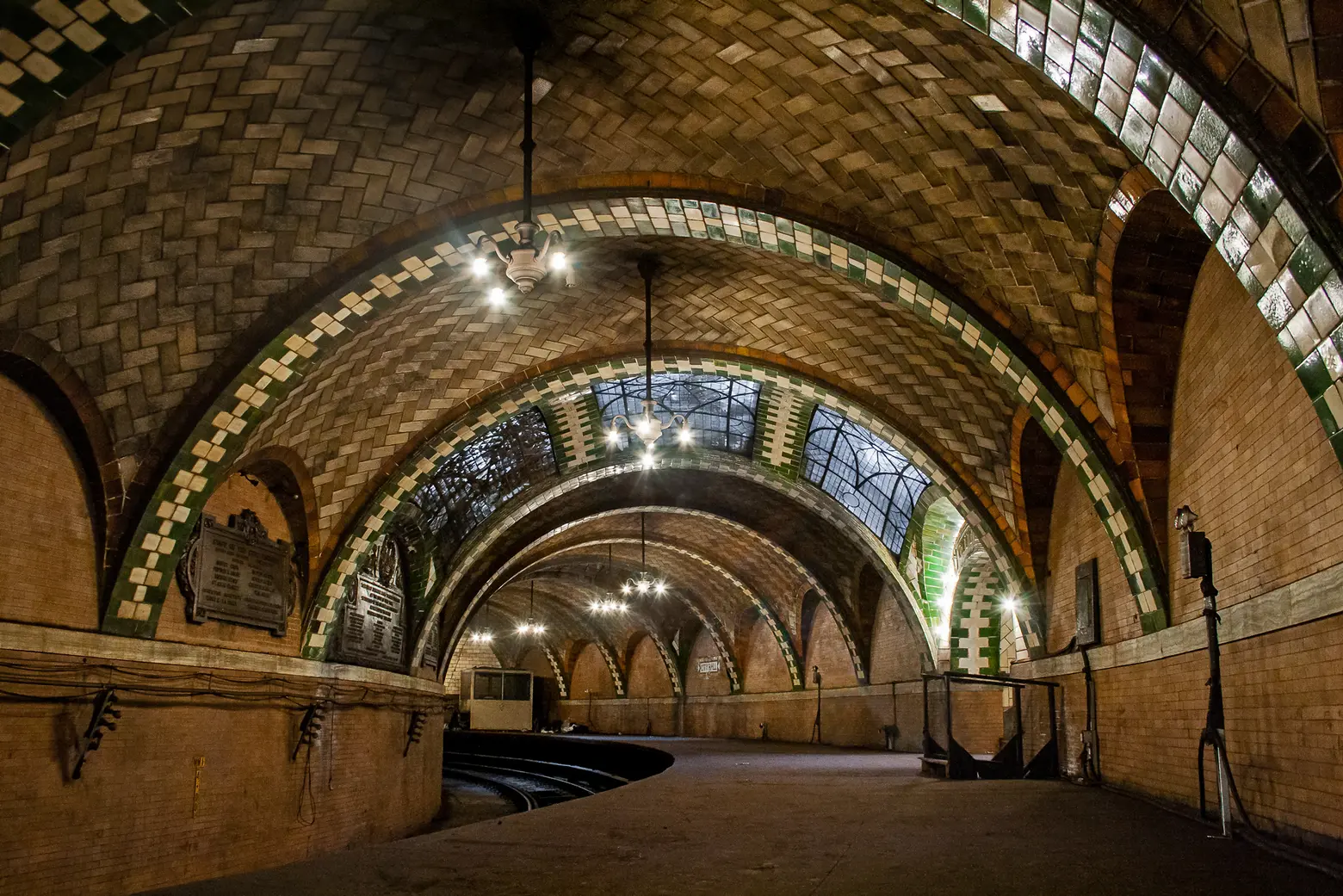 Photo © James and Karla Murray
Photo © James and Karla Murray
118 years later, riding the train is hardly an occasion (except for when the Second Avenue Subway finally opened) and the City Hall Station is no longer open to the public. It was closed just a few decades later, in 1945, because the curvey platform wasn’t able to accommodate the IRT’s newer, longer cars. It remains stunning, to this day, and a reminder of what a huge deal it was all those years ago to go underground and hop on a train.
If you want to get a look at the City Hall subway station today, you can stay on the downtown 6 train after it leaves the Brooklyn Bridge station (it loops through the City Hall station to head back uptown) Check out this behind-the-scenes photo journey from photographers James and Karla Murray.
[Via Untapped Cities]
RELATED:
- Inside the stunning, abandoned City Hall subway station
- This Map Explains the Historic Tile Color System Used in NYC Subway Stations
- See inside the secret train track hidden in the depths of Grand Central Terminal
Editor’s Note: This story was originally published on October 27, 2017.
